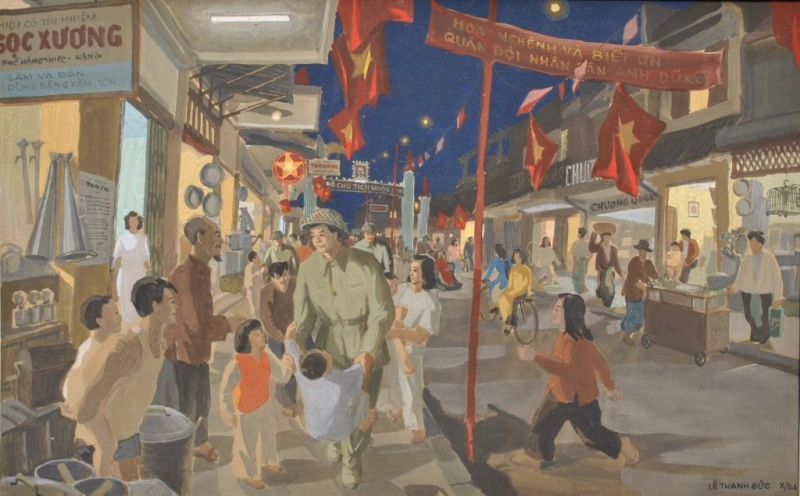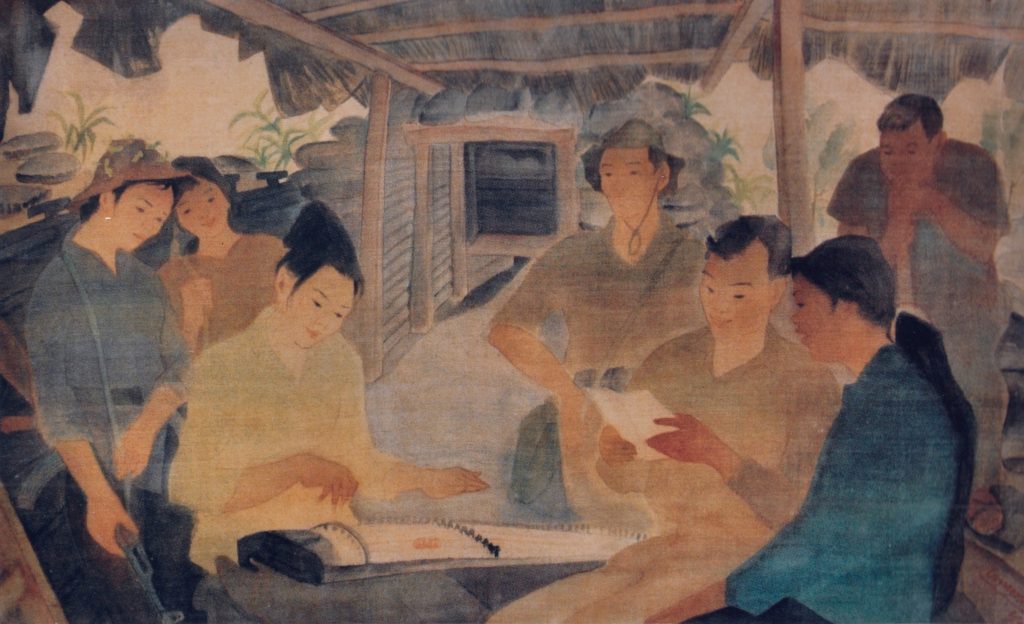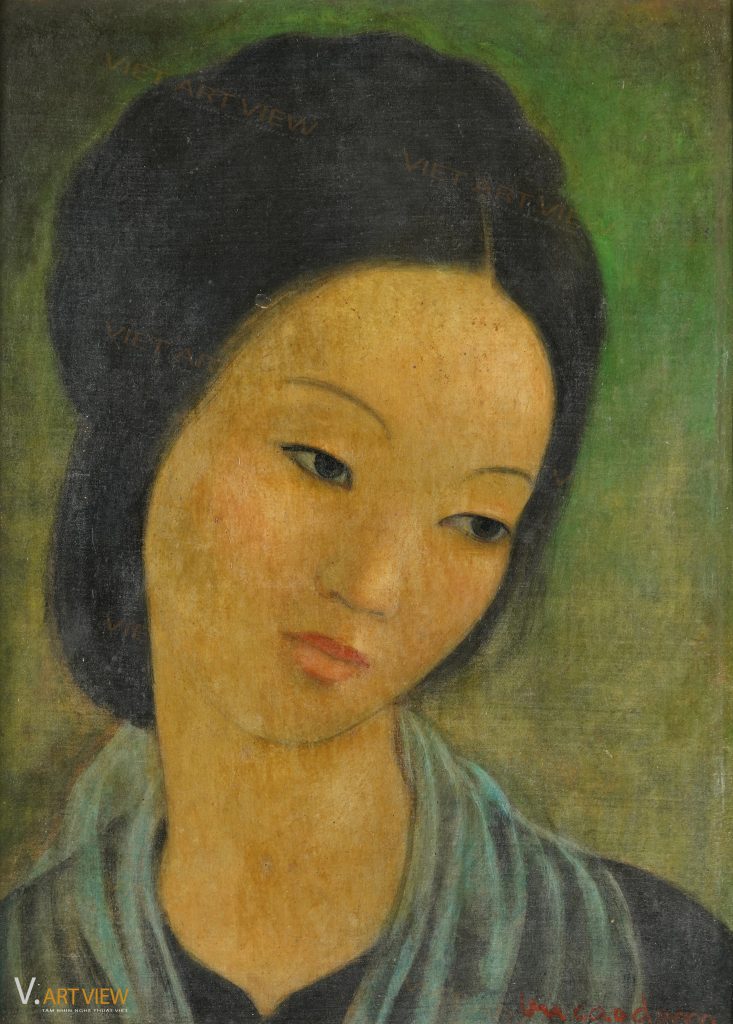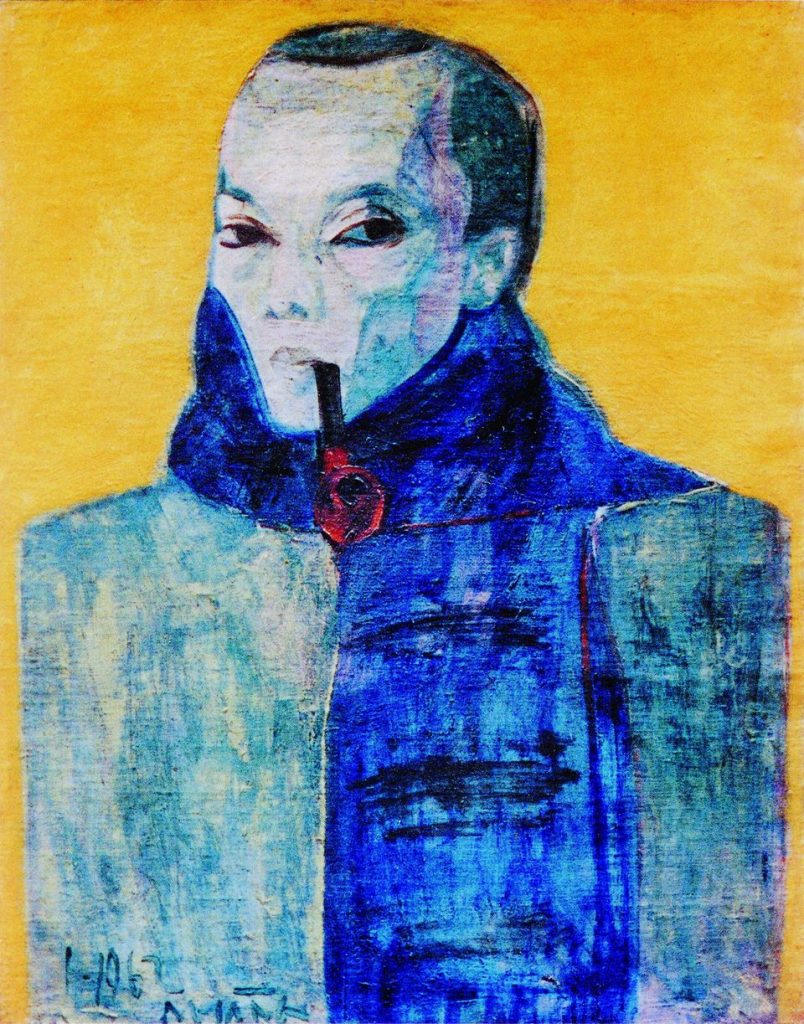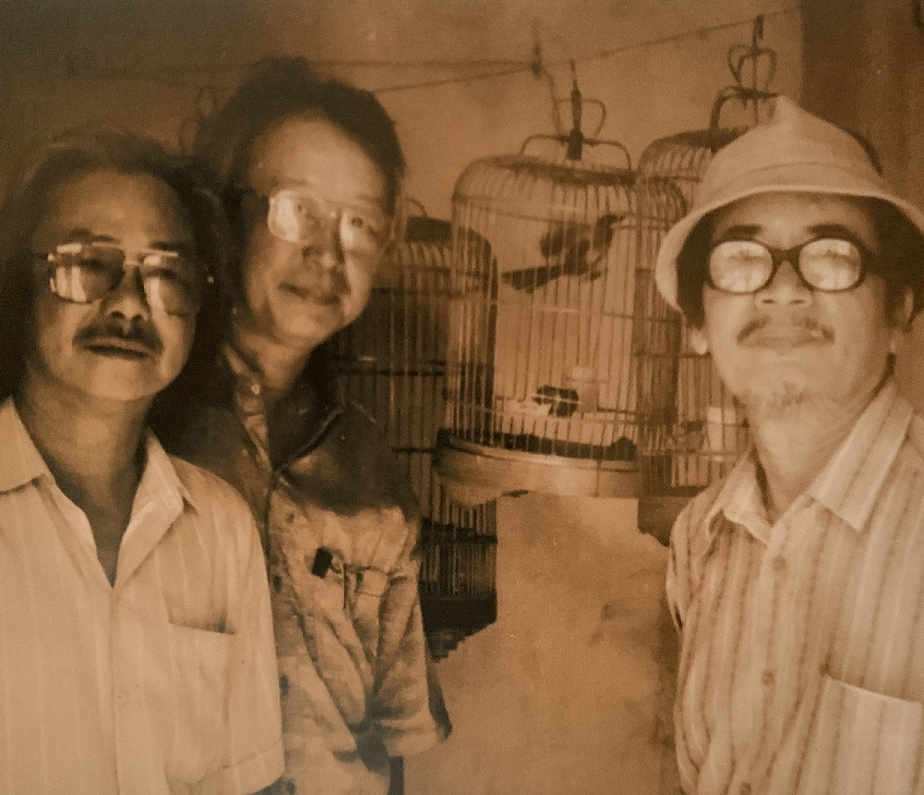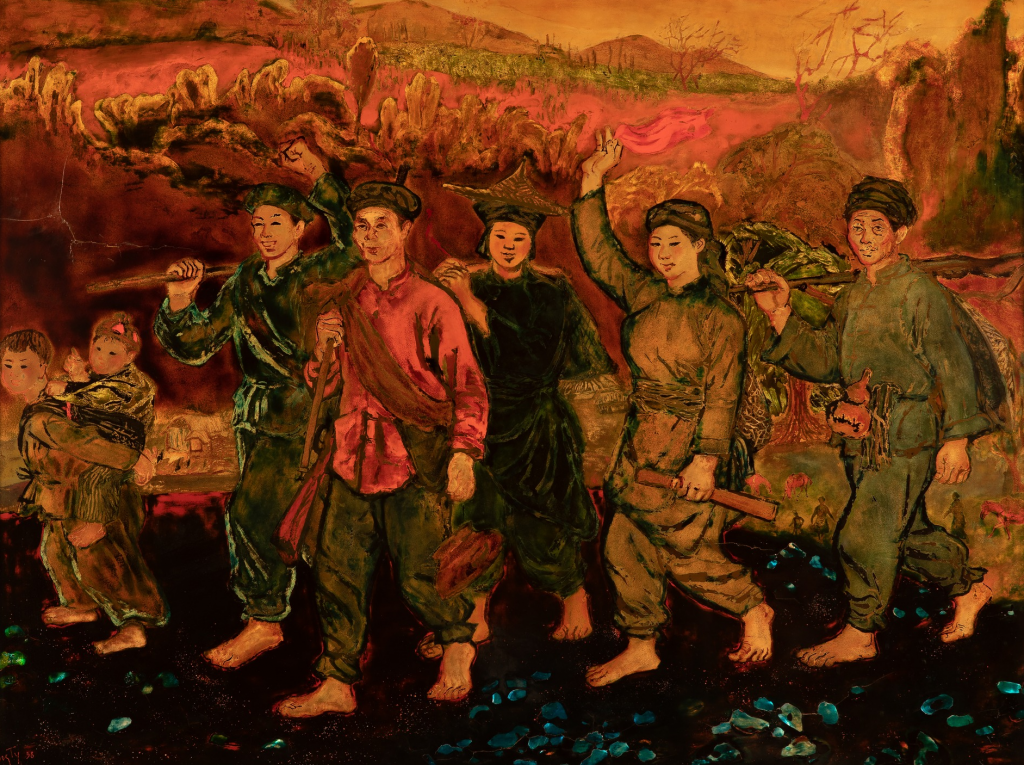
Artist Inguimberty (1896-1971), the familiar name with painting lovers of Vietnam. While artist Victor Tardieu (1870-1937), Nguyễn Nam Sơn (1890-1973) — two artists who were considered in many documents as the role of co – founders of Indochina Fine Arts College, then Inguimberty was always mentioned as a conscientious decorating teacher, with many contributions for educating, building the human source of Vietnam modern art before the August Revolution.
Joseph Inguimberty was born on January 18, 1896 in the beautiful port city Marseille, Mediterranean, the south of France. He passed the exam to enter L’Ecole des Beaux-Art Marseille — Fine Arts College of Marseille in 1910, parallel the major course of architecture. In 1913, Inguimberty was admitted to École Nationale Supérieure des Arts — The National College of Decorative Art. In 1915 to 1918, during the first World War, he enlisted, fighting in an infantry unit. After the war, he returned to the Arts college and won a scholarship to study in the Netherlands in 1920.
While in the Netherlands and Belgium, he painted themes about the lives of workers in the coal mines there. He won the Prix Blumenthal in 1922 and the National Prix for painting in 1924. His fate with Vietnam was on August 13, 1925, when he hold the pen signed a teaching contract at Indochina Fine Arts College, Hanoi by the invitation of artist Victor Tardieu — the college’s first principal… Surely he did not expect that he would stick with Vietnam for more than 20 years, from 1925 to 1946. There, he also met his wife Jeanne Bensa. The couple were married in 1942.
During the years of living, working and teaching at Indochina Fine Arts College, he visited many places in Vietnam. The landscape in his paintings covers most of the provinces from Thua Thien Hue to the North such as Ha Long – Quang Ninh, Hai Phong Port, Duong Lam – Son Tay, Cho Bo – Hoa Binh, Sapa – Lao Cai… Inguimberty was very fond of Vietnamese countryside. He often cycled, explored the village roads around the outskirts of Hanoi, he was fascinated by the flat geographical structure of the North with fresh ponds and lakes and countless green trees under the bright yellow sunlight of the countryside.
The set of ten introduced here includes paper paintings, canvases, watercolors, pastels, and pencils with various dimensions. The largest one, nearly 100cm wide. The rest of the pictures range in dimension from 22cm to 60cm. These 10 pictures are all research papers to build large works. In particular, the picture “Talking under the tree”; “Farmer in the crops field”; “The sitting Vietnamese girl”… are sketches of paintings with typical themes in Inguimberty’s creation.
The first picture
Dans les riziès, travail préparatoire ¬– Farmers on crops field; c. 1930-1935; oil, watercolor on paper 37×97cm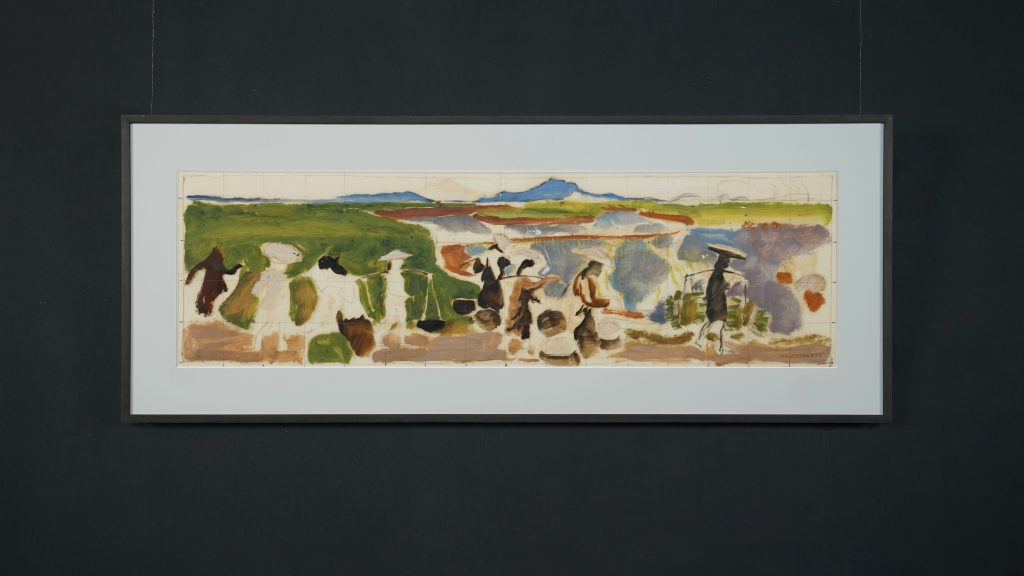
This is the research drawing for the very large-scale painting “Dans les riziè en bas à droite – Farmer in the field at harvest time”, circa 1925-1946, oil, 95×344.5cm. Compared to the painting “Cho Bo”, dimension 125×395cm, this is probably one of Inguimberty’s largest paintings. The painting depicts a group of rural women in the North with hair in scarf, head wearing a basket-strap hat or traditional conical hat, in a light brown outfit. All are burdened with heavy products of farm such as paddy, rice, young seedling… Behind is a vast field with wings of storks flying and the Ba Vi mountain range hidden in the distance.
The second picture
Travaileurs des rizières, travail préparatoire – Rice paddy farmers, preparatory work; c. 1930. Pecil on paper. 37×59,1cm
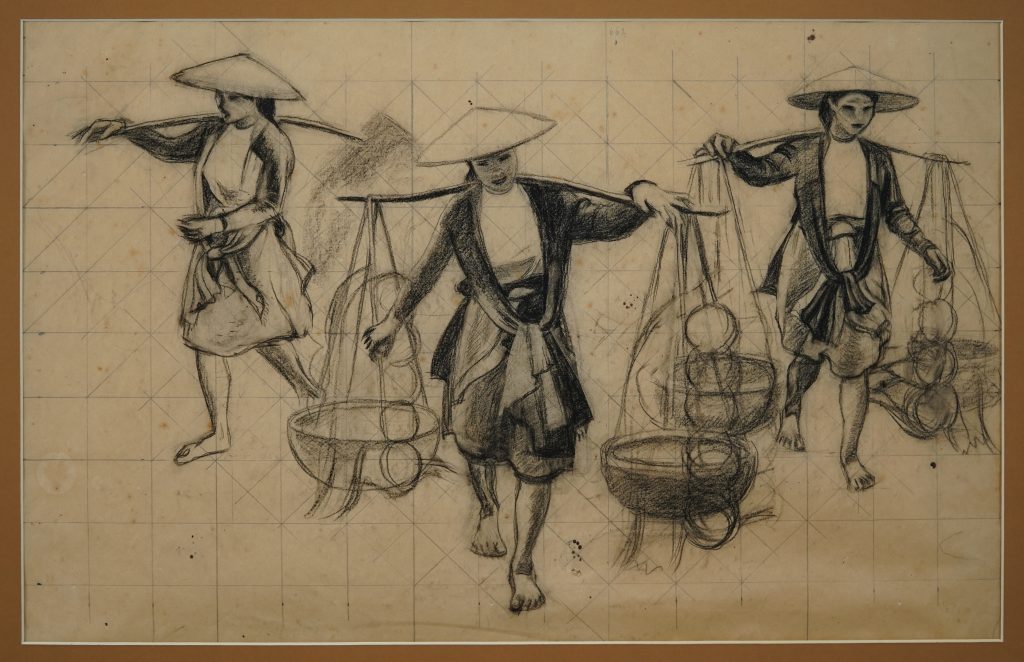
This is one of the most basic painting studies for rural women in the North with the crops of Inguimberty’s creation. This research drawing appears in two paintings of the same name “Travailleurs des rizières – Women carrying paddy”, oil, dimension 97×147cm. This drawing shows a solid foundation of European Academy classical shaping, the meticulousness in studying images to build his works.
In 2004, at Christie’s Hongkong, a pencil drawing, black and white watercolor on paper with dimension 49×68cm sold at the auction, price at that time was 53,775 HKD equivalent to 160 million dong. This shows the attraction of works with the name Inguimberty.
The third picture
Réunion sous les arbres – Chatting under the tree; c. 1930-1940; watercolor on paper – seal of the artist on the right; 32×42cm.
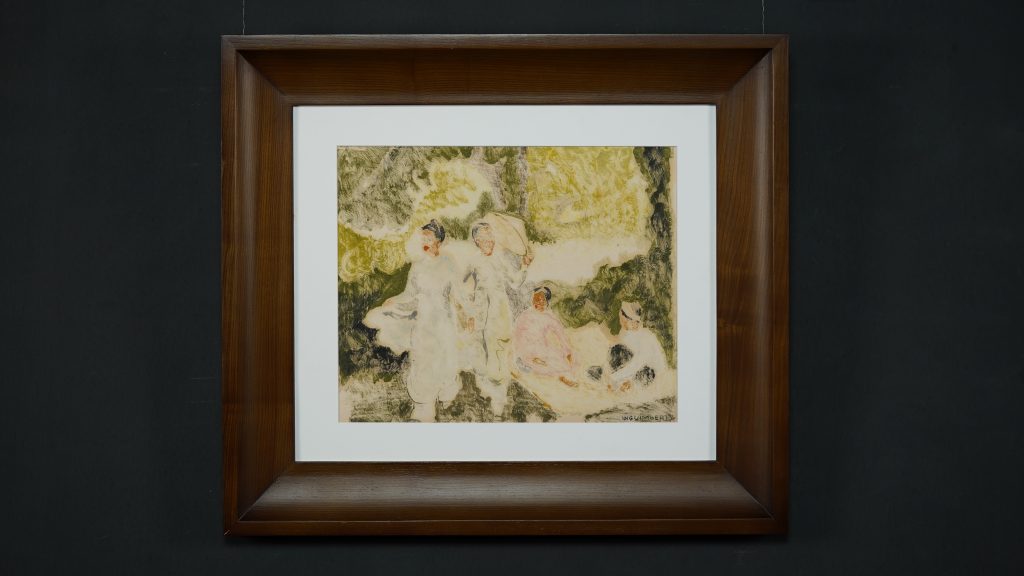
According to the photo taken in the book Joseph Inguimberty (1896-1971) with the title “Mares – Pond, lake”, there are many printed works depicting the scene of Vietnamese daily life in the 30s and 40s. This is one of the focal themes that Inguimberty presents in his paintings of Indochina. These scenes often depict a group of people who may be resting, walking, selling… beside a pond (lake) under cool shady trees. The focal painting of this subject is “Pecheurs au bord de la mare” – The Fisherman by the Lake, 1933, oil on canvas, 144×236cm.
Inguimberty was fascinated by the nuances of color around him. It is the brilliant yellow of the sun, of rice, of straw with multitude of green shades; reddish brown roads, blue sky background… all reflected in the ponds and lakes that abound in every village. He especially loved to create the image of girls with flowing, gentle gown ‘áo dài’, meeting and chatting under the trees by the lake. Such motifs are very much represented in his paintings. These women were not busy, they are simply posing for the artist to take sketches, sometimes talking to each other or brushing their long hair. Some were elegantly dressed, some may be nude.
The fourth picture
Jeune Vietnamienne assise – Sitting Vietnamese girl; c. 1930-1940; pencil on tracing paper; 34×24cm
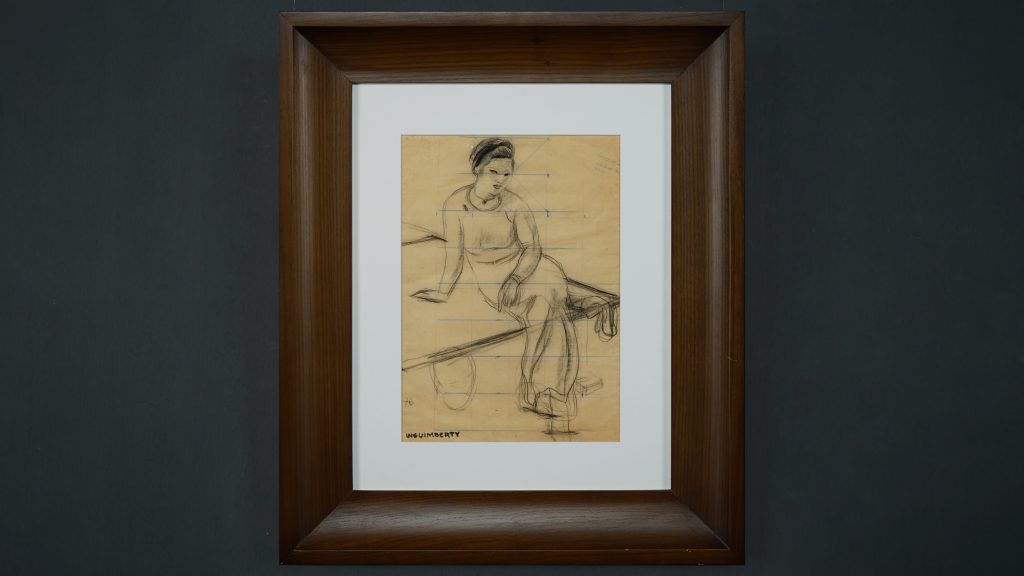
Although it is only a pencil sketch, the image of a girl wearing ‘áo dài’ appears in many of Inguimberty’s paintings, with the figure of a woman wearing a jade green ‘áo dài’. The most prominent one is the figure sitting in the center of the painting “Au bord de la mare – By the pond”, 1937, oil, 160×260cm. This woman character also appears in “Repos au jardin – Resting in the Garden”; “Le repos – Rest”; extremely famous painting “Le hamac- The hammock”… or in the portrait “Portrait de femme – Portrait”, oil, 31.5×40cm.
The artist he loved and admired the most was Nicolas Poussin (1594-1665). He was influenced by Poussin in constructing a classical fresco painting with green curtains and goddess-like characters. That spirit is clearly expressed in paintings with themes like these.
The fifth picture
Jeune Vietnamiene – A young woman; c. 1930-1940; pencil on paper; 31×23,5cm
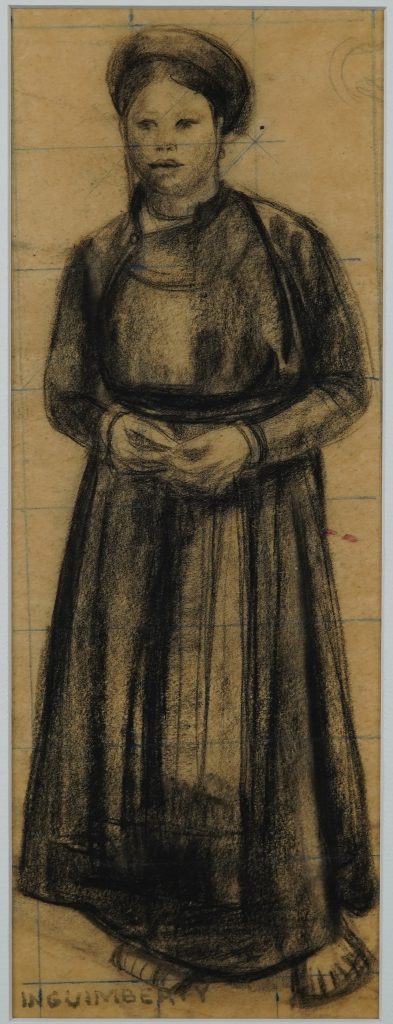
Just like the young woman with the jade green ‘áo dài’, This woman also appears in many of Inguimberty’s paintings, but in the appearance of a village young woman.
In the painting “Portrait de jeune tonkinoise – Portrait of Northern women”, 55×46cm, of the Witness Collection, Malaysia, Inguimberty has portrayed a typical Northern woman with a black scarf on her head and characteristic black teeth for chewing betel nut. The image of a peasant woman in the North appears frequently in all of his paintings depicting the subject of working in the fields.
The sixth picture
Mausoleum of Minh Mang, Hue; c. 1930; pastel trên giấy; 32×49,5cm
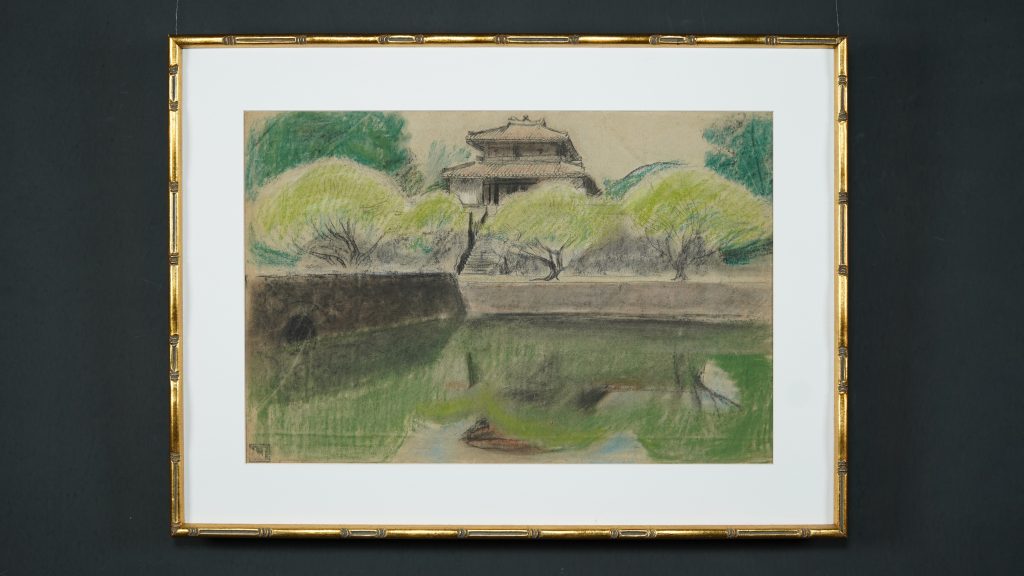
In the paintings of Vietnamese landscapes, perhaps Hue is the farthest place from Hanoi that he painted. The pastel painting of mausoleum of King Minh Mang, Hue here was probably painted in the 1930s-1940s. The work depicting architectural landscape of Minh Mang mausoleum viewed from the right. On the same subject, he also made an oil painting “Temple”, 46×55cm with a front view of the mausoleum, showed a very similar style regardless of the medium.
Hue painter Ton That Dao, a student of Inguimberty, specializes in painting Hue landscapes with the palace, mausoleum, and temple architecture, but has a detailed perspective in the Asian style when using many decorative details. Inguimberty was different, he used large, definitive color patches, left out details, even many characters did not have details on their faces.
The seventh picture
Temple, éléphant – Temple, elephant; c. 1929; pastel on tracing paper; 32×49cm
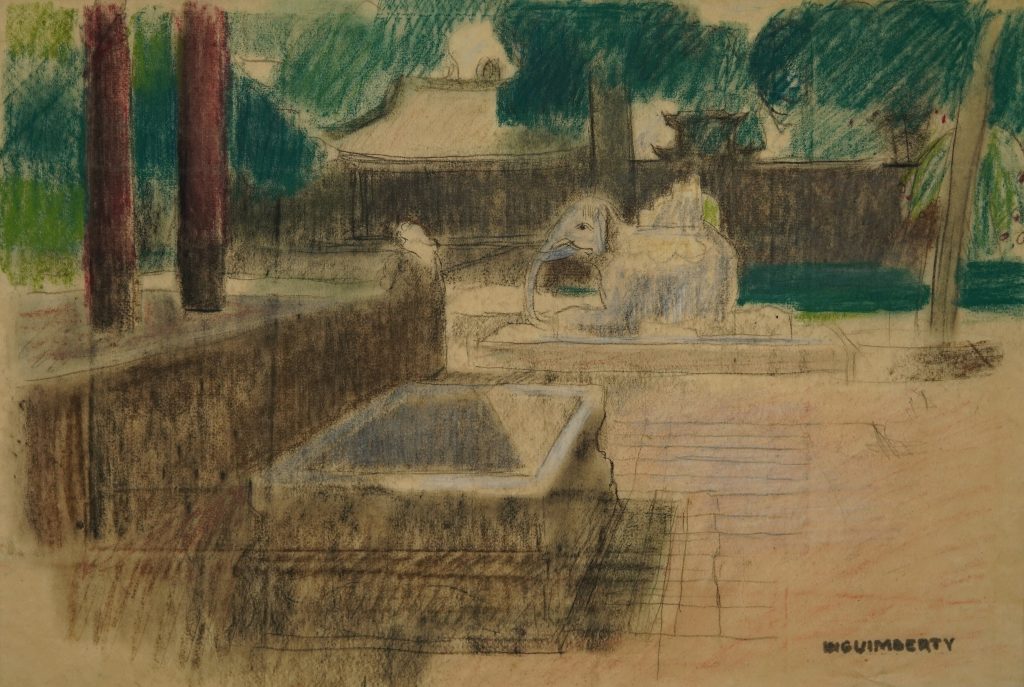
The same goes for this elephant temple picture. Inguimberty sketched, evoked colors on architectural details. He himself was an architecture student, so his architectural paintings will be very coherent. Although we don’t look too closely for the details of the image, but just looking at it, we see the steadiness in shaping, build enough coherence to see steady patterns of shaping technique.
The eighth picture
Sapa; c. 1942; oil, watercolor on tracing paper; 28×22cm

In the 30s and 40s, Inguimberty create many paintings about Sapa. And like in other typical subjects, he painted large dimension paintings as the focal point. The most remarkable is the painting “Chapa – Sapa”, 1942, oil, 84.5×185cm. The beautiful little painting of Sapa here, although of modest size, is painted on tracing paper with oil, watercolor… but depicts majestic mountains, winding terraces, group of ethnic people along with the very typical pack horses in Lao Cai.
Inguimberty had the ability to specially zoom the frame for the same amount of space, whether large or small, it is reasonable without causing a feeling of reluctance.
The ninth picture
My wife; pencil on paper
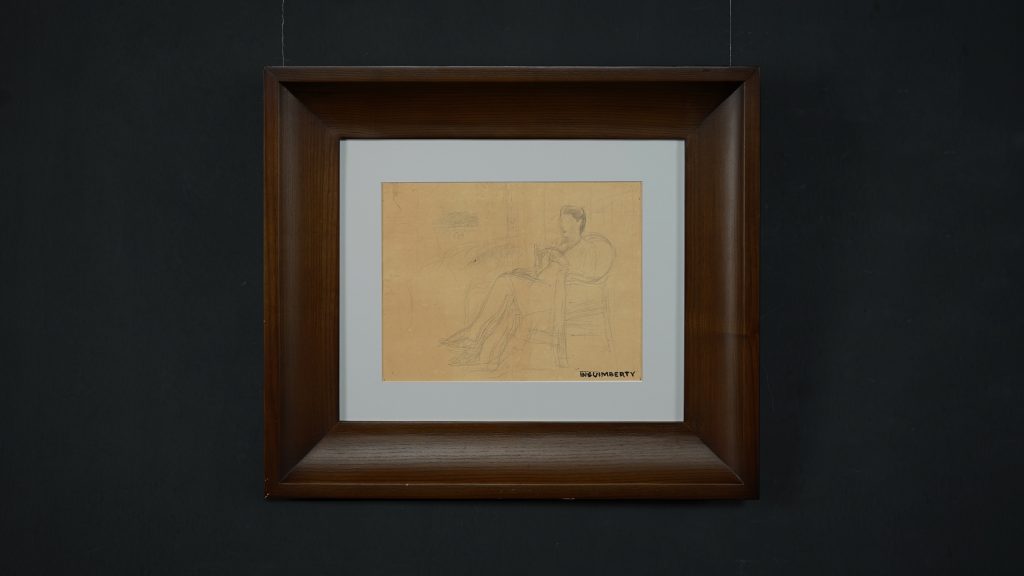
The tenth picture
Portrait of the artist and his wife; pencil on paper
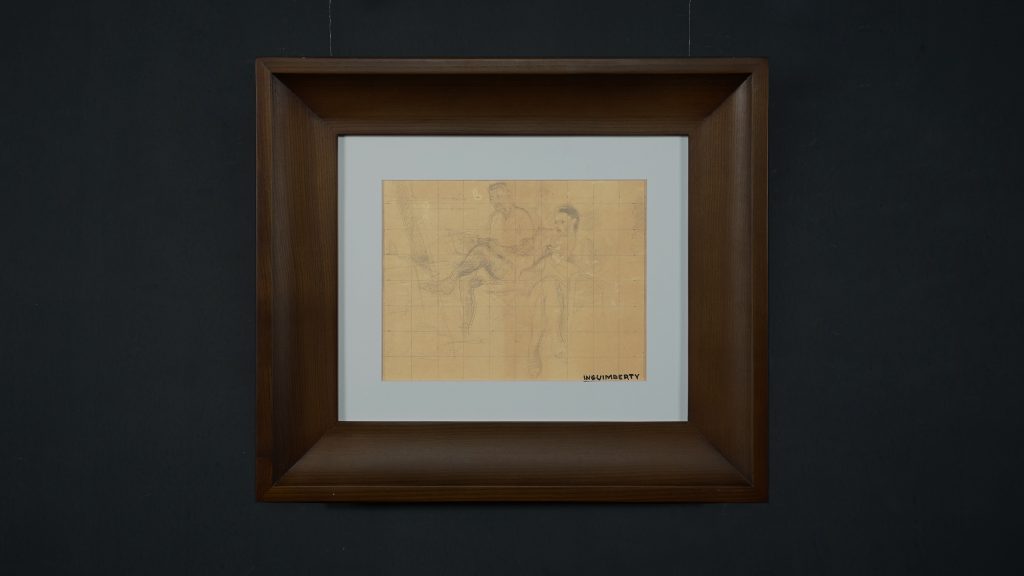
The two pencil sketches here are studies for “Autoportrait avec Jeannette sur la terrasse – Self-portrait with Jeannutter on the terrace”, 1944-45, oil, 65×81cm, and “Jeannetter sur la terrasse – Jeannette on the terrace”, 1944-45, oil, 57×71cm. Jeanne Bensa – is the wife of Inguimberty, the woman he met, married and lived happily in Vietnam since 1942. Although it is only a study of pencil, we can clearly see the thoroughness, meticulousness and science in the construction of the work.
Therefore, behind Inguimberty’s paintings are hundreds, thousands of sketches recorded from reality. They require the artist to spend a lot of time, energy and intelligence on building and practicing historically, culturally and artistically valuable, beautiful paintings for mankind. Iguimberty was a French painter who came to Vietnam to work and he really loved the people here, attached to this land. That’s why he was able to create paintings imbued with Vietnamese identity and spirit like that.
To talk about the person of Inguimberty, please share the comment of painter – researcher Quang Phong (1924-2013) about him: “Inguimberty is exactly like a Vietnamese painter who understands and loves his homeland.”
By Viet Art View


